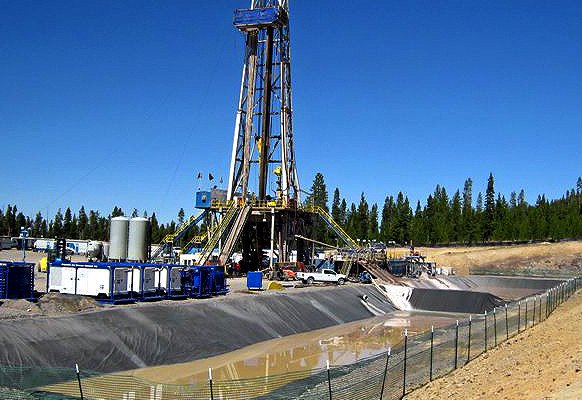Article Center
Top Questions About Hydraulic Fracturing
According to the IPAA, there are about 1.7 million fracked oil and gas wells in the U.S. as of 2021
Considering Pros and Cons of Fracking
Industry representatives like to highlight new jobs and the associated economic growth in nearby communities brought by new shale development
Managing Fracking Waste
The rapid expansion of unconventional oil and gas extraction has been credited with achieving actual energy independence for the US
What is Flowback Water?
There are already well publicized concerns by citizens groups and environmentalists about chemicals in fracking fluid
The Frenzy Over Fracking Fluid
There are many detractors of hydraulic fracturing, just as there are many detractors for coal mining
Fracking the Well
Starting off, building a well for a shale deposit looks a lot like building a regular well.
Economics of Fracking in Oil & Gas Production
The supply of oil and natural gas embedded in the Earth is still very large, yet it is finite.
What Does the Future Hold For Hydraulic Fracking and Oil Containment?
Oil and natural gas in the United States is on the verge of transforming the world’s energy markets for a second time, further undercutting both Saudi Arabia and Russia.
What Are The Best Ways to Protect My Fracking Operation?
Our nation’s oil and gas industry has made immense technological strides in the last ten years, making the extraction of resources more efficient.
Hydraulic Fracking Q&A: Part I
As a leading producer of hydraulic fracking liners in the United States, our team fields a lot of questions around the industry.
Hydraulic Fracturing and Frac Tanks Support the American Economy
There’s no denying that fracking has upended the American energy system.
Do Frac Tanks Help the American Economy?
The implementation of hydraulic fracturing has significantly lowered energy prices while strengthening energy security.
What are Frac Tanks?
As technology employed by hydraulic fracturing advances, new water containment and flowback containment methods also rise in the fracking market.
What Locations do Hydraulic Fracturing and Frac Pad Liners Require?
With any strategy, there is the option to return to a well pad to drill more wells and continue extracting oil and gas.
What are the Major Differences Between Hydraulic Fracturing and Conventional Drilling?
While traditional drilling is only done vertically, hydraulic fracturing can expand from 100 to 2,000 feet horizontally in order to better capture oil and gas within each layer or zone that has been fractured.
All About Frac Pits: Understanding Primary Frac Pit Liners and Secondary Frac Pit Liners
In this article, we’ll delve a little deeper with our understanding of fracking by exploring frac pits as well as how to best line them.
Your Checklist to Selecting the Best Oil and Fuel Liners
State regulatory programs often include parameters such as liner requirements, maintenance, closure, and financial assurance requirements.
How Do I Choose the Best Oil and Fuel Liners? Understanding the EPA
The Environmental Protection Agency, or EPA, has a multitude of requirements in place in for the gas, oil, and mining industries.
Understanding Hydraulic Fracturing Basics: Safety First
Hydraulic fracturing, also referred to as “fracking,” is an oil and gas well development process. It has provided safe oil and natural gas extraction for over sixty years.





















